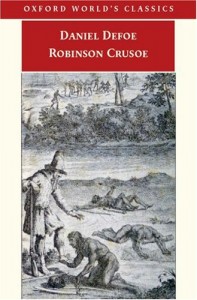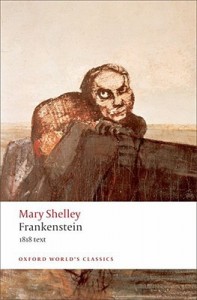 Title: The Monk (Goodreads)
Title: The Monk (Goodreads)
Author: Matthew Lewis
Published: Oxford World's Classics, 1795
Pages: 456
Genres: Classic, Gothic
My Copy: Paperback
Buy: Amazon, Book Depository, Kindle (or visit your local Indie bookstore)
When The Monk was first published in 1796 it was surrounded by heated hatred and scandal. One critic claimed that The Monk was full of “Lust, murder, incest, and every atrocity that can disgrace human nature”; a line that now seems to commonly appear in the synopsis. While this novel is a transgressive gothic novel and possibly one of the first books to feature a priest in such a villainous way there is so much more going on within the pages. To begin, we must look at the context, and it is not surprising that this novel had so much anger towards it when it was released. The reader has to understand that this novel was released in a period of time where everything was changing. The church still played a huge role in English society but across the channel the French Revolution was raging on, so in the middle of a changing society came a novel that tried to explore the political and religious authoritarianism of the church.
The Monk is set in a sinister monastery in Madrid, were Ambrosio struggled between maintaining his monastic vows and falling to temptation. We follow this monk as desire turns to obsession, to rape and then murder in order to conceal the guilt. Ambrosio is a celebrated and devout monk of 30 years but we read his downfall due to desire and pride. This novel is a social commentary of everything wrong with the church as the author sees it. The Monk follows the story of Ambriosio’s disillusion, from a well-respected Monk, serving God to a psychologically scared man.
Matthew Lewis wrote this novel at 19 years old and I think it is important to mention that I don’t view The Monk as an indictment of God or the Church but more critique of the corrupting power that comes with the priesthood. When I read this I got the impression that Lewis wanted to explore the hidden struggles that come with the vows of a monk as well as the effects of power. When we think about all the evil the church has done, it is not God or religion that is to blame but rather the people. Guilt and power can corrupt and essentially we are looking at a man going to great lengths to disguise his transgressions.
This is not an easy read and I found myself struggling at times to get through this book but there is so much going on I found it hard to believe that when this was first published it was dubbed this gothic classic to be crude and lacking of depth. In the heavily censored edition of this novel published in 1798 saw all words like lust and desire removed from the text. Even words like enjoyment were removed and any mention of sex; I can’t imagine how the essence of The Monk would have remained with this heavily edited edition. While there was plenty of hatred toward the novel, the critics seemed to have mixed feelings towards it. Samuel Taylor Coleridge both praised and judged harshly in his article found in The Critical Review, saying “[the] underplot… is skilfully and closely connected with the main story, and is subservient to its development” and “The Monk is a romance, which if a parent saw in the hands of a son or daughter, he might reasonably turn pale.”
However The Monk looks at more than just the monastery, it even looks at what seems like an anti-feminist movement going on within the Church. The convent seems like a harsh place to live, the women brutally treated and never allowed to succeed. Woman are seen as the downfall of the monks and other woman but there is so much lust, desire and sexual misconduct that happens inside the walls of convents and monasteries. Matilda posed as a man in order to get close to Ambrosio, at first it wasn’t to seduce but to bask in his brilliance. She is portrayed as a she-devil but is it really her fault that Ambrosio gave into his earthly desires. As one critic stated “It is Ambrosio’s sexual ignorance and hence ‘innocence’ that makes him vulnerable to Matilda’s seduction” (Blakemore, 1998). This made me ponder and question the whole approach to life in a monastery, especially in an era where priests are more likely to be sexually ignorant.
I’ve mentioned a few times that The Monk was met with hatred and I think this is still true today; people tend to see the book as anti-religious, anti-Catholic and immoral but this is a problem with taking text to literally. The Monk is a satire and socially critiques the church in what feels like a comedic kind of approach. It happens that this is also a transgressive gothic novel so we have a very brutal and dark approach to the themes Matthew Lewis wants to explore. Near the start of the book I read the line “She was wise enough to hold her tongue. As this is the only instance known of a Woman’s ever having done so, it was judged worthy to be recorded here” and thought it was a little harsh; I soon began to see a real tongue in cheek approach emerging from this dark novel.
I started off thinking this was a gothic novel and it was going to be dark and serious but I soon found myself adjusting my approach. Once I got past my initial misconceptions I started to settle into this book and ended up really enjoying The Monk. It took a while to get into a groove and found the first part of the book to be particularly difficult to get through. Then the plot started to settle in and I was able to explore the themes and enjoy the journey I was taken on. I’m so glad I finally got around to reading this gothic classic, it is weird but wonderful. I hope everyone else enjoys it as much as I did.

 Title: The Secret Garden (
Title: The Secret Garden ( Title: The Sorrows of Young Werther (
Title: The Sorrows of Young Werther ( Title: War and Peace (
Title: War and Peace ( Title: Robinson Crusoe (
Title: Robinson Crusoe ( Title: Frankenstein (1818 Edition) (
Title: Frankenstein (1818 Edition) ( Title: The Mysteries of Udolpho (
Title: The Mysteries of Udolpho ( Title: Mrs Dalloway (
Title: Mrs Dalloway ( Title: Heart of Darkness (
Title: Heart of Darkness (